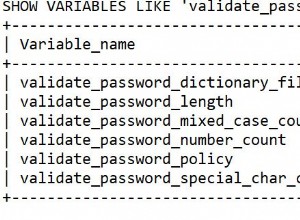Eu perdi a tag mysql e escrevi esta solução. Infelizmente, isso não funciona no MySQL, pois não suporta funções de janela .
Posto assim mesmo, pois me esforcei bastante. Testado com PostgreSQL. Funcionaria de forma semelhante com Oracle ou SQL Server (ou qualquer outro RDBMS decente que suporte funções de janela).
Configuração do teste
CREATE TEMP TABLE v(id int, visit date);
INSERT INTO v VALUES
(444631, '2011-11-07')
,(444631, '2011-11-06')
,(444631, '2011-11-05')
,(444631, '2011-11-04')
,(444631, '2011-11-02')
,(444631, '2011-11-01')
,(444632, '2011-12-02')
,(444632, '2011-12-03')
,(444632, '2011-12-05');
Versão simples
-- add 1 to "difference" to get number of days of the longest period
SELECT id, max(dur) + 1 as max_consecutive_days
FROM (
-- calculate date difference of min and max in the group
SELECT id, grp, max(visit) - min(visit) as dur
FROM (
-- consecutive days end up in a group
SELECT *, sum(step) OVER (ORDER BY id, rn) AS grp
FROM (
-- step up at the start of a new group of days
SELECT id
,row_number() OVER w AS rn
,visit
,CASE WHEN COALESCE(visit - lag(visit) OVER w, 1) = 1
THEN 0 ELSE 1 END AS step
FROM v
WINDOW w AS (PARTITION BY id ORDER BY visit)
ORDER BY 1,2
) x
) y
GROUP BY 1,2
) z
GROUP BY 1
ORDER BY 1
LIMIT 1;
Saída:
id | max_consecutive_days
--------+----------------------
444631 | 4
Mais rápido/mais curto
Mais tarde, encontrei uma maneira ainda melhor.
grp os números não são contínuos (mas continuamente crescentes). Não importa, já que esses são apenas um meio para um fim:SELECT id, max(dur) + 1 AS max_consecutive_days
FROM (
SELECT id, grp, max(visit) - min(visit) AS dur
FROM (
-- subtract an integer representing the number of day from the row_number()
-- creates a "group number" (grp) for consecutive days
SELECT id
,EXTRACT(epoch from visit)::int / 86400
- row_number() OVER (PARTITION BY id ORDER BY visit) AS grp
,visit
FROM v
ORDER BY 1,2
) x
GROUP BY 1,2
) y
GROUP BY 1
ORDER BY 1
LIMIT 1;
SQL Fiddle para ambos.
Mais
- Um solução processual
para um problema semelhante.
Você pode implementar algo semelhante em MySQL . - Respostas estreitamente relacionadas em dba.SE com explicações detalhadas aqui e aqui .
- E no SO:
GROUP BY e valores numéricos sequenciais agregados




